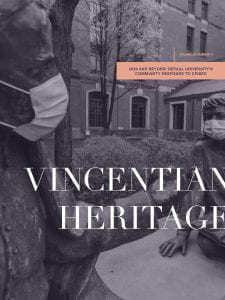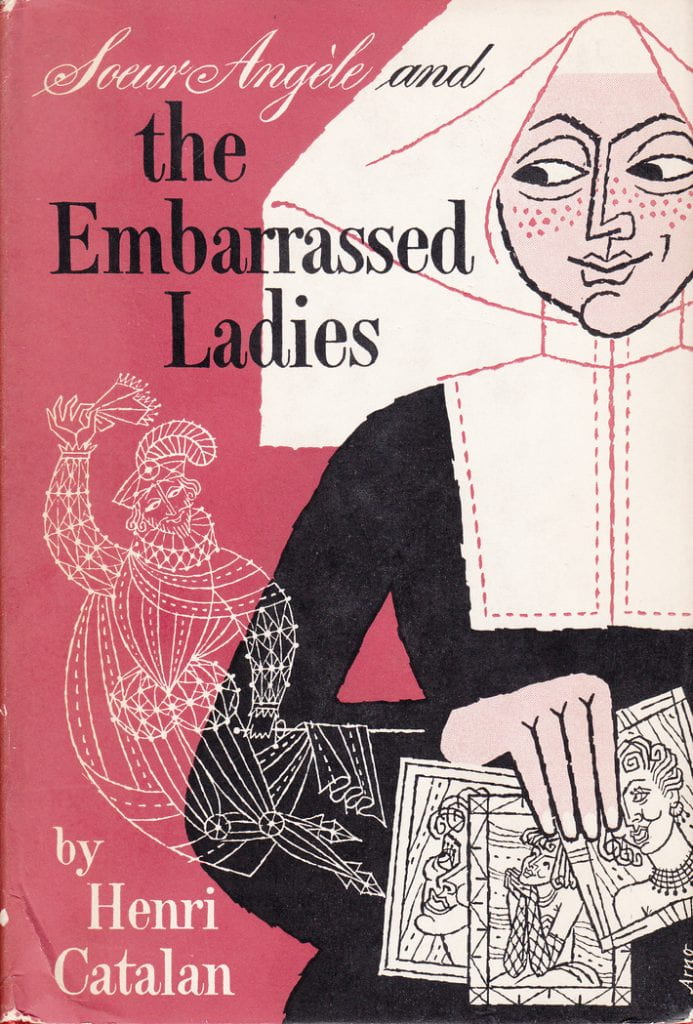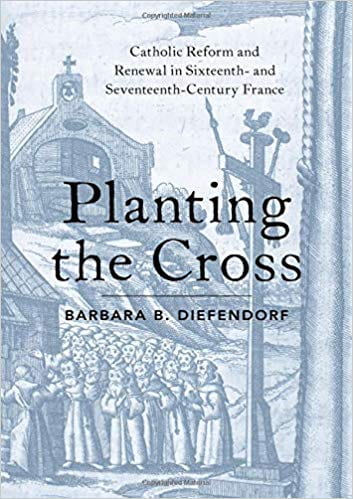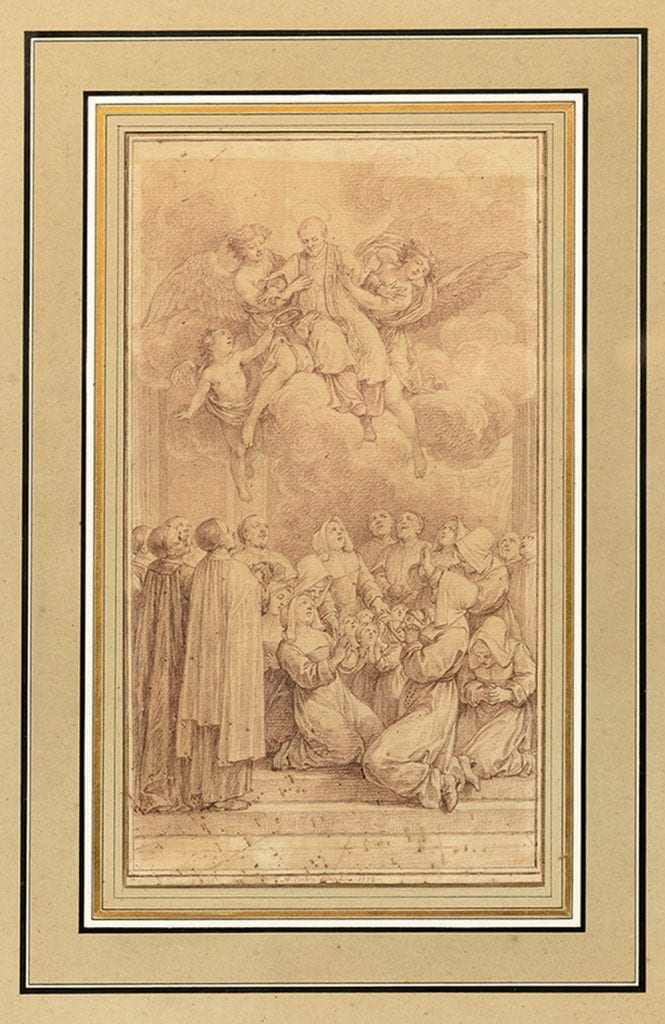 Our Biannual Journal is Free and Ready for Download
Our Biannual Journal is Free and Ready for Download
The year 2020 began an unprecedented era as we faced three intermingled crises: the COVID-19 pandemic, the scourge of systemic racism brought further to light by the murder of George Floyd, and a presidential campaign that highly divided our country. These were frightening, strange times, full of sound and fury yet juxtaposed by a silent, deserted campus. How did these crises change us? How did they impact our work and our relationships? How did we respond as a Vincentian higher learning community? And, given what we’ve experienced, how do we now move forward?
To answer these questions the DePaul University Vincentian Studies Institute called out to our university community for materials responding to 2020. As a result, we are pleased to announce the publication of our newest peer-reviewed e-book edition of Vincentian Heritage, “2020 and Beyond: DePaul University’s Community Responds to Crises.” This special issue managed by Prof. Matthieu Brejon de Lavergnée, the Dennis Holtschneider Chair of Vincentian Studies at DePaul University, features an opening from A. Gabriel Esteban, PhD, DePaul University’s president, a theological reflection from Guillermo Campuzano, C.M., vice president of the Division of Mission and Ministry, and a wide variety of contributions from prominent faculty, staff, and university affiliates. From articles, to photos, to poetry, to collections of student artwork, each of these fourteen works is devoted to our Vincentian response to the crises that enveloped us in 2020, and that indeed continues to this day.
We offer this volume of Vincentian Heritage to our DePaul community in hopes that it helps us to better understand the myriad ways all of us have worked to face the challenges of this unprecedented time.
To download the complete book for iPad or PC, please click here.
Individual .pdfs for each article are also available for download here.
Featured in this edition:
- “Introduction. 2020: DePaul University’s Community Responds to Crises,” Matthieu Brejon de Lavergnée, Ph.D.
- “The Guiding Principles of Leading and Living Through a Pandemic,” A. Gabriel Esteban, Ph.D.
- “A Vincentian Reading of the Pandemic: Hope Beyond All Reasonable Expectation,” Guillermo Campuzano, C.M.
- “Creativity Can’t Be Canceled: DePaul Students Express Their Pandemic Experience Through Art,” Lin Batsheva Kahn
- “Critical Perspectives on Our Current Moment: An Experiment in Teaching for 2020,” Jane Eva Baxter, Ph.D., Sarah Brown, Jenicel Carmona, Val Carnes, Zoe Espinosa, Randall Honold, Ph.D., Cary Robbins, George Slad, Margaret Storey, Ph.D.
- “Online Community Engagement Enhances Service Learning,” Dan Baron, Kaliah Liggons, MPA, David Pintor, Jonathan Handrup, LSW, and Rubén Álvarez Silva, M.Ed
- “The Graces of 2020: Catholic Campus Ministry Students Seek Out Blessings Amid a Tumultuous Year,” Amanda Thompson, MDiv, & Dan Paul Borlik, C.M., DMin
- “‘Learning Not to Despair of Our Own Age’: The Society of Saint Vincent de Paul in This Time of Pandemic,” Timothy P. Williams
- “The COVID-19 Pandemic and Homelessness: Depaul International Responds,” J. Patrick Murphy, C.M., Ph.D.
- “Mass Incarceration, COVID-19, and Race as Exposure to Early Death,” Traci Schlesinger, Ph.D.
- “Pandemic, Poverty, and Power: Biosocial Ethics of Global Solidarity for Health,” Stan Chu Ilo, Ph.D.
- “C-Void,” Amaris Casiano-Zoko
- Opening Images Essay, Olga Rozenbaum, Stefania Cosentino








